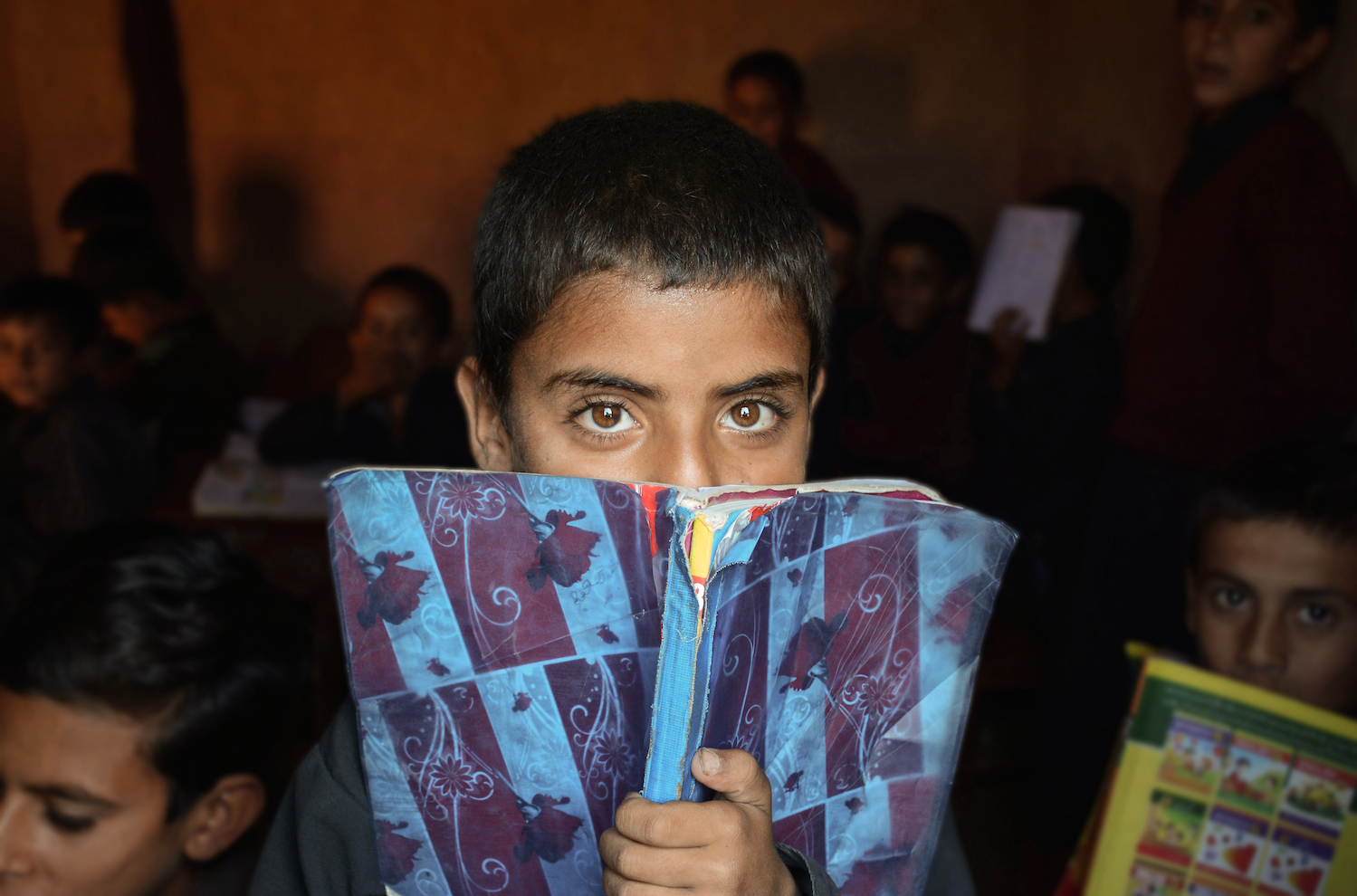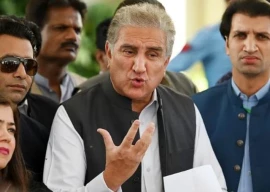
The state is far more deplorable in government-run schools located on the outskirts of the Pakistan's urban areas.

Third grade students in a school on the outskirts of Peshawar sit on floor mats during an English Language lesson because there are no chairs or desks available for them.

These fourth grade students in a school on the outskirts of Rawalpindi have to sit on the cold floor as they copy off Math sums in a door-less classroom. Unlike the school in Peshawar (pictured above), they do not have the luxury of floor mats.
These schools reveal a stark contrast between public and tuition-charging private schools as they clearly lack basic furniture to facilitate its students in leading an average school life.

A twelve-year-old Hameeda, the only girl in her class, finishing her work in a makeshift school located on the outskirts of Islamabad.
Many girls in Pakistan are strongly discouraged by their families from getting an education.

A six-year-old Hina sitting on a clay floor in a makeshift school located on the outskirts of Islamabad. Unlike the other school (pictures earlier), this one seems to lack a floor altogether.

A group of girls taking a Math lesson in a school in Mohlanwal, located on the outskirts of Lahore. Public schools are often criticised for failing to impart quality education among its students.

Twelve-year-old Nadia scribbles on a whiteboard in a school in Golra Sharif, located on the outskirts of Islamabad.
Apart from schools facing acute shortage of teaching staff, the state of education has also been affected by low attendance of school teachers and the hiring of 'ghost' teachers.

Under Article 25-A of the Constitution of Pakistan, the government is obligated to provide free and compulsory education to children between the ages of 5 to 16 years.


1731925783-0/Betty-White-(1)1731925783-0-165x106.webp)

1731926127-0/zayn-(1)1731926127-0-165x106.webp)





1731910868-0/Copy-of-Untitled-(45)1731910868-0-270x192.webp)






COMMENTS
Comments are moderated and generally will be posted if they are on-topic and not abusive.
For more information, please see our Comments FAQ